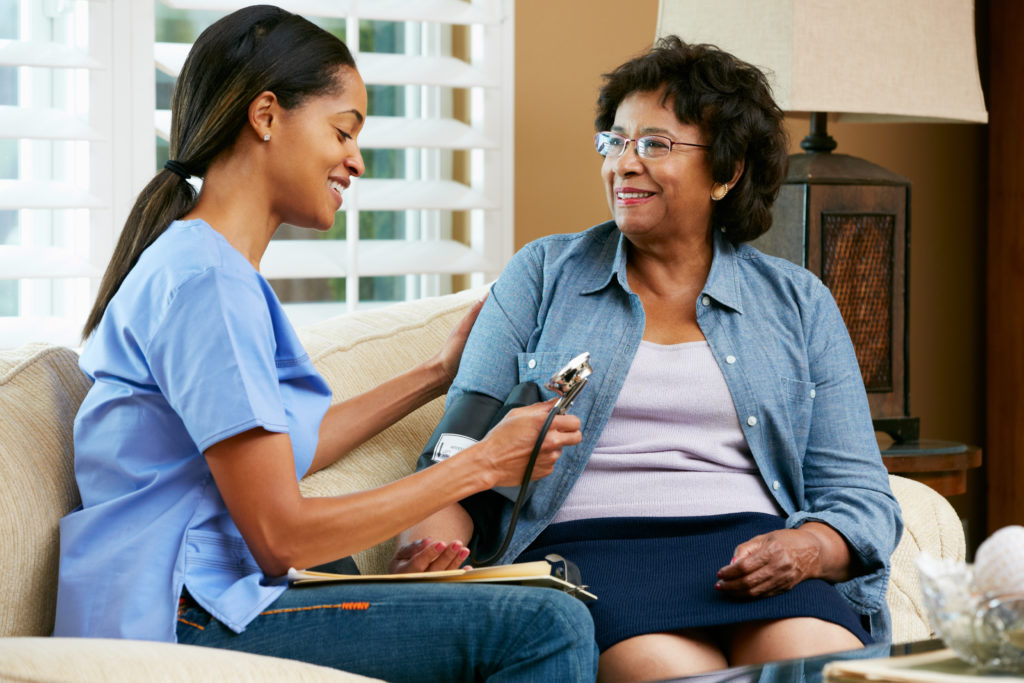
5 minute read
In the pre-Covid years, when I was the family caregiver for my mother with mild dementia and chronic pain, I became the point person for her home-based care team. I was forever on the phone managing the shifting schedules of her home health aides and receiving instructions from her home-based physical therapists and occupational therapists on exercises for her to do. I met with her care managers at her kitchen table many times to go over her benefits and services. I filled her pill box every Sunday night and then begged her not to play with the many-colored tablets when I wasn’t around.
It’s true that I also took her frequently to office-based medical appointments, sat with her in emergency rooms, and visited her in hospitals on too many occasions. But my mother’s tidy two-bedroom apartment a mile from my house was the hub for her healthcare. It’s where I worked in partnership with her helping professionals to enable her to age in place for as long as she could.
In the dawning post-Covid period, family scenarios like this will only become more common. Home-based care is on the ascent. The pandemic has boosted consumer interest in receiving essential services in the comfort of their own residences, far from potentially infection-ridden offices and facilities. The resulting boom in telemedicine and remote monitoring is only part of the story. Every week brings new announcements about initiatives around the country that combine digitally enabled and hands-on, in-person care, such as home-based primary care, hospital-at-home programs, and SNF (skilled nursing facility)-at-home programs. In the future, older Americans with functional limitations, such as the cognitive and physical impairments my mother had, may receive all their healthcare and supportive care in the residences they live. The ensuing shifts in healthcare resources will be pronounced. Already there has been a steady stream of news articles about the contracting (if not collapsing) nursing home industry.
There is another crucial ramification of all this: As home-based care rises, then so does the necessity of family-oriented care, especially for Americans living with or near relatives. I believe my experiences with my mom attests to this. Family caregivers will be keepers of the hearth and healthcare. Providers will be relying on patients’ loved ones as observers, participants, and decision-makers to a greater degree.
For long-time members of CFHA, the reaction to more family-oriented care is “What took so long?” Our organization’s earliest leaders, Bill Doherty and Mac Baird, wrote Family Medicine and Family Therapy in 1983. Susan McDaniel, Thomas Campbell, and David Seaburn penned the first edition of Family-Oriented Primary Care in 1990. Decades have passed since in which healthcare became more patient-centered and family members were often marginalized. But now the rise of home care is forcing the issue.
The pandemic has boosted consumer interest in receiving essential services in the comfort of home
What’s necessary now is that healthcare providers embrace patients’ family members as home-based allies for improved patient outcomes, not meddlers in professional-patient relationships. To make family-oriented care as effective as possible, they need to provide family caregivers with the following:
- A welcoming attitude. Family members can feel when providers are ambivalent or worse about their involvement in a patient’s treatment. They are then less likely to share information about a patient’s behavior or symptoms while at home. The provider who turns toward rather than away from family caregivers and make them feel valued will gain loyal comrades.
- A reliable system of communicating. Family members need healthcare and social service professionals to encourage patients to permit them to share information with family members. They need ways of reaching providers by phone, text, email, video conferencing, or EHR portal with questions and observations and know they will get timely replies.
- The right training. Many family members are willing to help but don’t know what help would make a difference with patients. Providers should give them meaningful roles in the treatment—e.g., doling meds, tracking blood sugar and blood pressure numbers, coaching swallowing regimens and physical therapy exercises—and then teach them the skills to succeed at those jobs.
- A say in treatment planning. Yes, it is the highest ethical principle to ensure that patients capable of making informed decisions do so. But providers can still solicit family caregivers’ input without overruling patients’ choices. They can encourage patients to seriously consider their family members’ opinions and concerns. It would be folly to reject family members’ perspectives as “biased” without hearing them first.
As part of so-called “self-directed care” or “consumer-directed care”, many states are now allowing patients’ family members to be paid as certified nursing assistants (CNAs) for caring for their loved ones at home. In my opinion, this is just the start of a broadening trend in which family members are recognized and perhaps compensated for their contributions to patient care. Home-based care will continue growing in the immediate future and patients will thrive—but only if family-oriented care becomes the national norm.

Dr. Jacobs makes excellent suggestions in this blog. In order for recommendations such as these to become standard practice a bridge needs to be built between the CFHA community of scholars and those in geriatrics. As someone with a foot in each of these two worlds I can attest that they are worlds apart in many ways. An initiative such as the Age-Friendly Health System might be a vehicle for bringing the two together. I would welcome a chance to be part of that effort.
Thanks, Carol. Appreciate your ideas. The Age-Friendly Health System initiative, undertaken by IHI and the John A. Hartford Foundation, is an excellent framework.